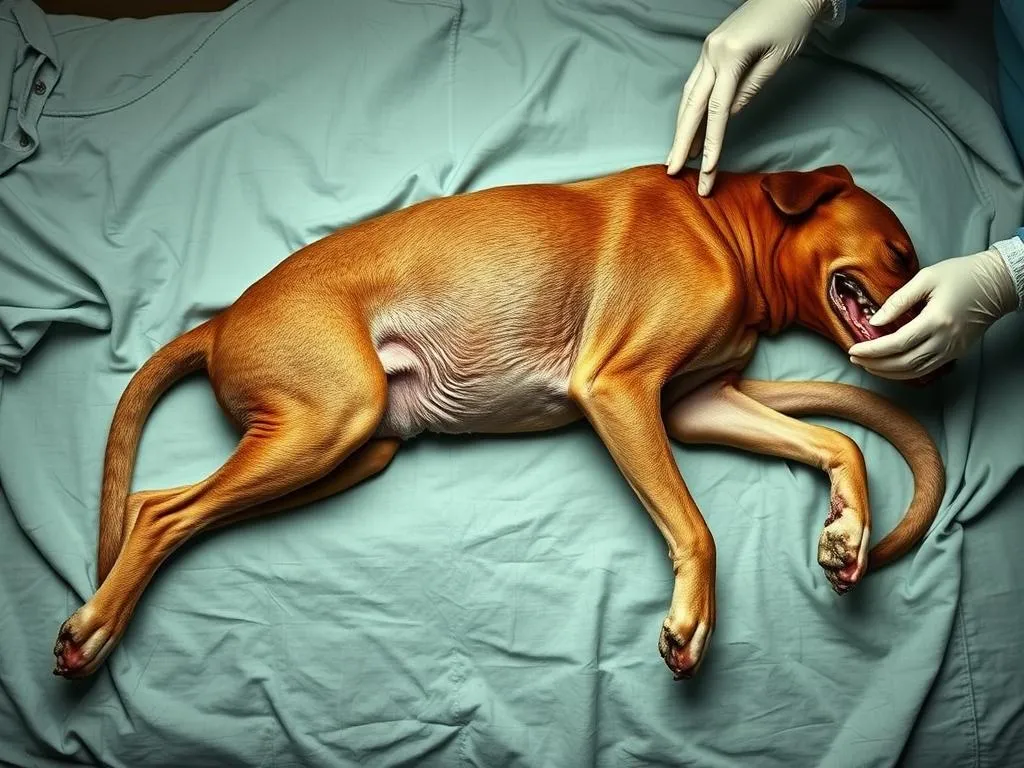
Introduction
When a beloved dog passes away, it leaves an emotional void that can be hard to fill. For pet owners, understanding the cause of their dog’s death is often a critical part of the grieving process. This is where necropsies come into play. While many are familiar with the term “autopsy,” which is used in human medicine, necropsies refer specifically to the examination of animals. Understanding the distinction between these two procedures is essential for pet owners who want to gain insight into their dog’s health and the potential causes of their death.
The importance of necropsies in veterinary medicine cannot be overstated. They provide valuable information that can aid in understanding the health issues faced by dogs, contribute to veterinary research, and even help answer unresolved questions for pet owners. This article will guide you through the world of necropsies, detailing when they are recommended, the process involved, their benefits, and commonly asked questions.
Understanding Necropsies
What is a Necropsy?
A necropsy is a post-mortem examination performed on animals to determine the cause of death. It involves a thorough examination of the body, both externally and internally, to identify any diseases, injuries, or abnormalities. Many pet owners mistakenly believe that necropsies are only conducted in cases of suspicious deaths; however, they can provide crucial insights into a variety of health issues, even in cases where death appears to be due to natural causes.
When is a Necropsy Recommended?
Veterinarians may recommend a necropsy in several situations:
- Sudden Death: If a dog passes away unexpectedly, a necropsy can help clarify the cause.
- Unexplained Illness: For dogs that have been sick for an extended period, understanding the underlying issues can be invaluable.
- Potential Legal Implications: In cases where there might be questions about negligence (e.g., in cases of suspected poisoning or medical malpractice), a necropsy can provide essential evidence for insurance claims or legal proceedings.
Understanding when a necropsy is warranted can help pet owners make informed decisions during a very challenging time.
The Role of a Veterinarian
Veterinarians are the primary professionals who determine the need for a necropsy. During consultations, they will discuss the circumstances surrounding the dog’s death and assess the potential benefits of performing the procedure. This conversation is vital, as it helps pet owners understand the value of a necropsy for both their peace of mind and for future veterinary practices.
The Necropsy Process
Preparing for a Necropsy
Before a necropsy can be performed, several steps must be taken:
- Owner Consent: Pet owners must provide consent for the procedure, as it involves the examination of their deceased pet.
- Documentation: Veterinarians will collect medical history, details about the circumstances of the dog’s death, and any other relevant information that can aid in the examination.
- Preservation of the Body: Proper handling and preservation of the body are crucial. Ideally, the body should be kept cool and handled gently to prevent decomposition.
The Necropsy Procedure
Once the necessary preparations are complete, the necropsy can proceed. The procedure generally involves the following steps:
- External Examination: The veterinarian will first examine the outside of the body, looking for any obvious signs of trauma, abnormalities, or disease.
- Internal Examination: This step includes the careful dissection of the body to inspect organs, tissues, and systems. Common areas of focus include the heart, lungs, liver, kidneys, and gastrointestinal tract.
- Use of Imaging Technology: In some cases, veterinarians may utilize imaging technologies like X-rays or ultrasounds to gather more information before proceeding with the necropsy.
Analyzing Results
After the necropsy is completed, the results will be analyzed. This process can take time, depending on the complexity of the findings. Typically, pet owners can expect to receive the results within a few days to a few weeks. Understanding these results can provide critical insights into the health of the dog and inform both the owners and veterinarians about potential genetic predispositions or environmental factors.
Benefits of Necropsies
Understanding Health Issues
One of the most significant benefits of a necropsy is the clarity it can bring to the health issues faced by a dog. It can reveal:
- Genetic Predispositions: Certain breeds are known to have specific health issues. A necropsy can help identify these issues, informing future breeding decisions.
- Disease Insights: Understanding diseases present in a deceased pet can help veterinarians anticipate and manage similar conditions in other dogs.
Improving Veterinary Practices
Necropsies contribute significantly to veterinary research and knowledge. By understanding the causes of death in canines, veterinarians can:
- Enhance Treatment Protocols: Insights gained from necropsies can lead to the development of better treatment methods for common diseases.
- Preventive Care: Understanding trends in health issues can help veterinarians recommend preventive measures for living dogs.
Emotional Closure for Pet Owners
The loss of a pet is a deeply personal experience, and understanding the cause of death can provide emotional closure. A necropsy can help pet owners:
- Coping with Loss: Knowing the cause of death can help alleviate feelings of guilt or confusion.
- Addressing Unresolved Questions: Many pet owners have lingering questions about their pet’s health. A necropsy can provide answers that enhance understanding and acceptance.
Common Questions About Necropsies
Cost of a Necropsy
The cost of a necropsy can vary widely depending on several factors:
- Location: Veterinary clinics in urban areas may charge more than those in rural settings.
- Veterinary Clinic: Some clinics specialize in necropsies and may have higher fees due to their expertise.
- Additional Tests: If advanced tests or analyses are required, this can also increase the cost.
On average, a necropsy might range from $100 to $500; however, costs can exceed this based on the complexity of the case.
How Long Does a Necropsy Take?
The average duration of a necropsy can vary, but the procedure itself typically takes a few hours. Factors that may influence timing include:
- Complexity: More complicated cases may require additional time for thorough examination.
- Laboratory Analysis: If tissue samples are sent for histopathology, results may take longer to process.
Ethical Considerations
Ethical considerations surrounding necropsies can be sensitive. Some pet owners may feel uncomfortable with the idea of an autopsy on their beloved pet. It’s essential for veterinarians to discuss these feelings openly, ensuring that owners feel respected and informed about the process.
Alternatives to Necropsies
Home Euthanasia and Post-Mortem Care
For some pet owners, the idea of a necropsy may feel overwhelming. Home euthanasia offers a peaceful alternative for pets at the end of their lives. After euthanasia, pet owners can choose various post-mortem care options, including cremation or burial, as a way to honor their pet’s memory.
Other Diagnostic Tools
While necropsies are invaluable for determining causes of death, other diagnostic tools can also provide insights:
- Blood Tests: These can uncover underlying health issues before death occurs.
- Imaging: X-rays and ultrasounds may help diagnose conditions without the need for a necropsy.
However, these alternatives may not provide the comprehensive understanding that a necropsy offers. Each method has its pros and cons, and pet owners should discuss these options with their veterinarians.
Conclusion
The significance of necropsies in veterinary medicine cannot be overstated. They play a crucial role in understanding canine health, advancing veterinary practices, and providing emotional closure for pet owners. By considering a necropsy, pet owners can gain insight into their dog’s health and contribute to the greater knowledge of veterinary medicine. It’s essential for pet owners to approach this decision thoughtfully, recognizing the emotional and scientific value of such a procedure.
Whether you find yourself facing the difficult decision of whether to pursue a necropsy or simply want to understand more about the process, consulting with your veterinarian can provide clarity and guidance. The journey of understanding your pet’s health may be challenging, but it can also be profoundly enlightening.









